找回歷史的高度
——簡評胡志穎作品《天風海雨》
找回歷史的高度
——簡評胡志穎作品《天風海雨》
張文海
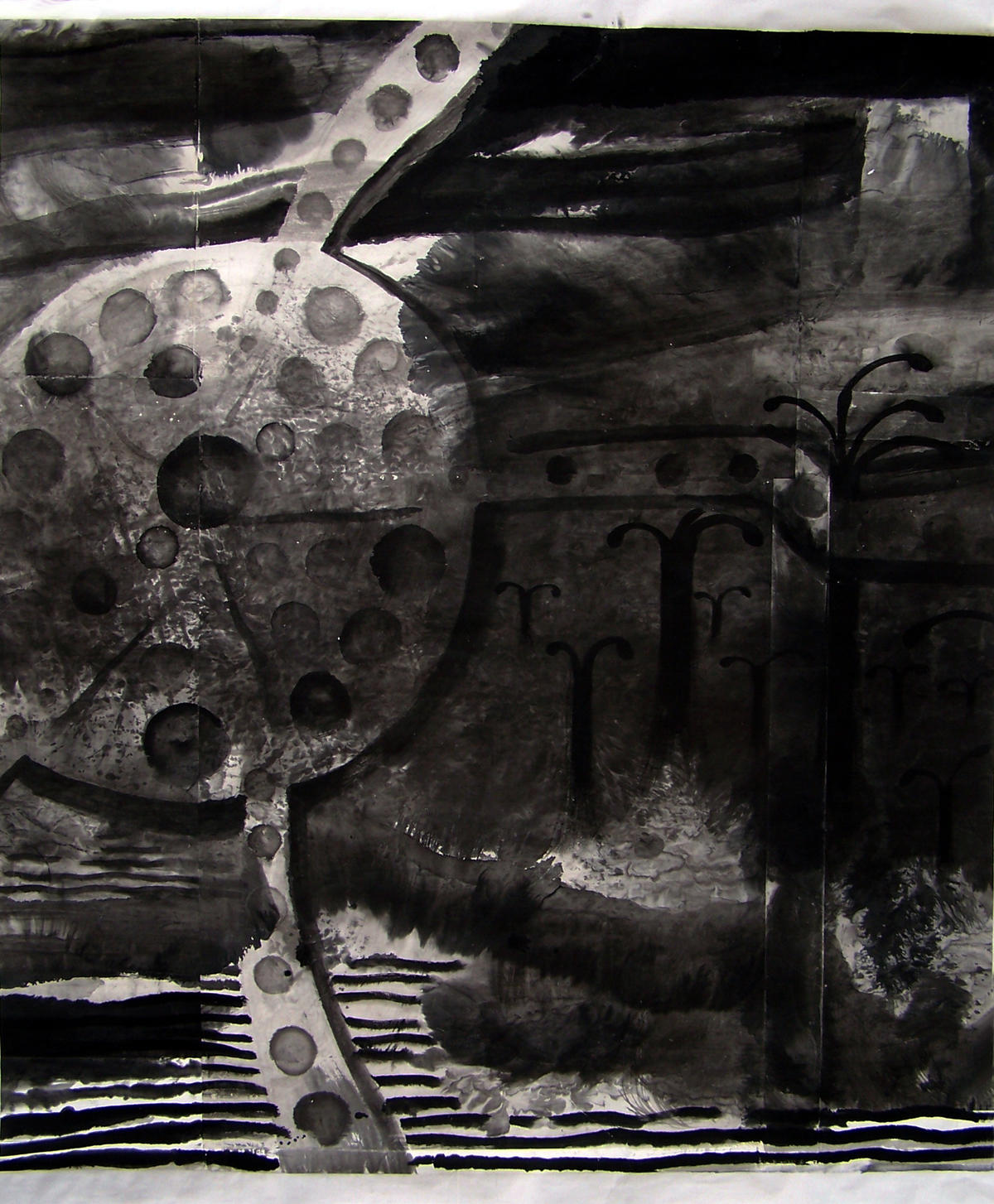
胡志穎 天風海雨 (局部),1989,宣紙,水墨,960x182cm HU ZHIYING Nature's Mystery, 1989, Ink on Rice paper, 960x182 cm
對中國藝術界來說,’85新潮是藝術家們在藝術與政治的夾縫裡的一次爆發。綿延千年的水墨畫發展至此也有了決裂式的突變。此時,傳統意義上的筆墨技巧與構圖形式已無法詮釋夾縫裡掙脫出來的現代藝術理念。水墨藝術不再是梅蘭竹菊式的詠物述懷,而是以水墨為載體,直接闡發藝術家個人的現代藝術觀念。觀念落實到畫面,也必然導致技法與圖式的突破。在觀念、技法以及圖式的突破性方面,胡志穎的《天風海雨》足以成為 ’85新潮時期乃至當下的眾多藝術家的可資借鑒者。畫面之中水墨語言及圖式的豐富性,不僅彰顯了作者超前的現代藝術觀念,更給人以充分的視覺刺激和精神征服。

胡志穎 天風海雨,1989,宣紙,水墨,960x182cm HU ZHIYING Nature's Mystery, 1989, Ink on Rice paper, 960x182 cm
傳統水墨觀念講究“傳物之神”。至唐代張彥遠有“書畫之藝,皆須意氣而成”之說;始將藝術創作的主旨直指創作者之“意氣”。但應該看到中國的水墨藝術直至通常意義上的近現代,畫面中始終未能擺脫傳神之“物”。至 ’85新潮,中國水墨藝術借西方現代藝術的抽象觀念,一躍而跳出了“物”的束縛,於畫面中直呈創作者的“心象”。從此時起,借助西方現代藝術理念,為了在新的時代賦予“水墨”這傳承千年的媒材以新的生命,從事現代水墨創作的個人和團體數不勝數。但縱覽全局,能稱之為上乘、無愧于時代的作品,卻若晨星之寥,而胡志穎的《天風海雨》卻是這晨星中極其難能可貴的一顆。 《天風海雨》作於1989年,畫幅長近十米,寬近二米。作者此時正值而立之年,雄姿英發,觀念超前。這尤其反映在水墨繪畫語言水乳交融、酣暢淋漓以及因之而來的畫面的斑斕形象、磅礴氣勢之中。近十米的鴻篇巨制,既保持了整體的神秘遼闊,又不失局部靈活通透。充分地呈現了創作者澎湃而飽滿的激情,使觀者置於幽冥、異類的世界中而不能自拔。
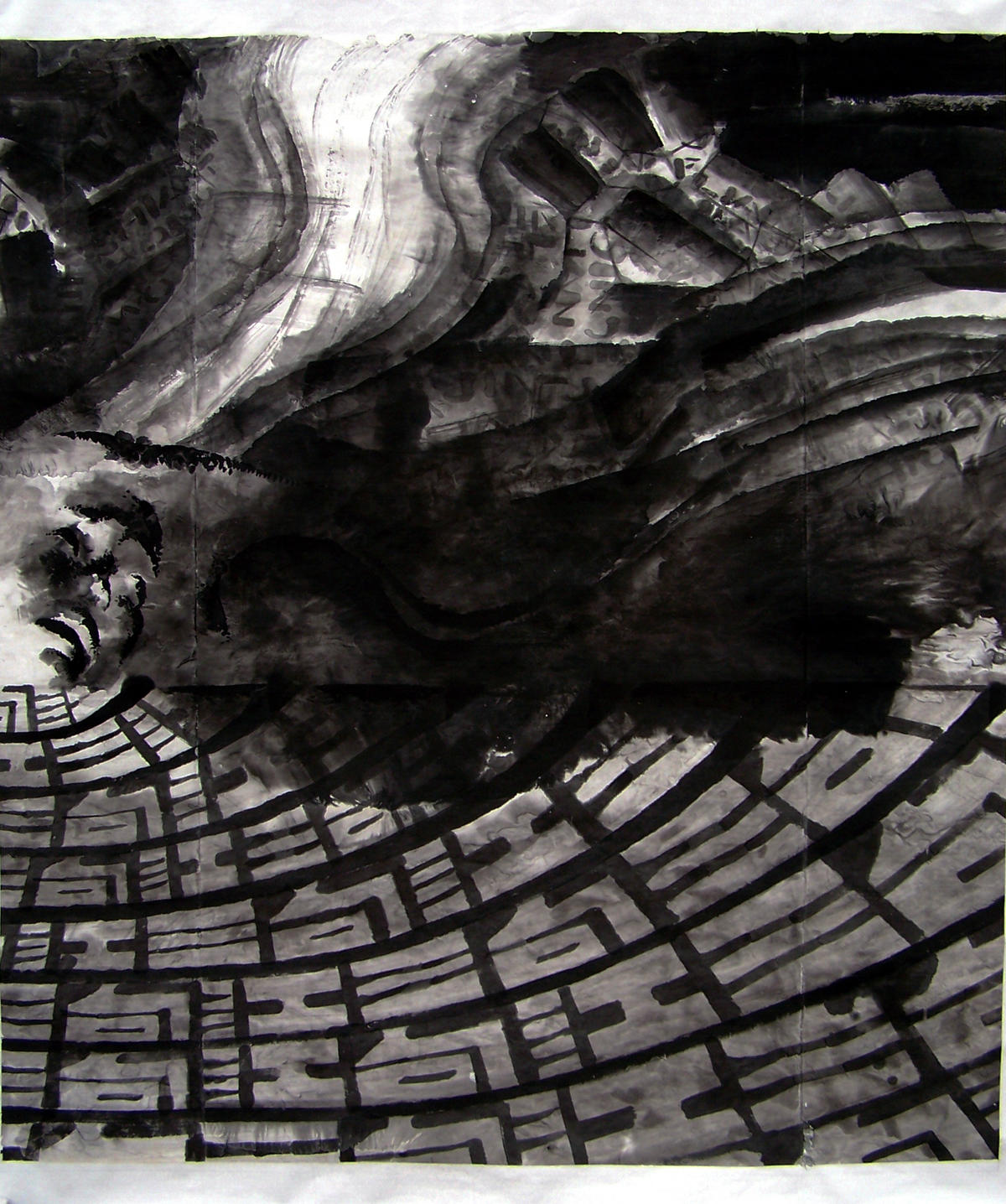
胡志穎 天風海雨 (局部),1989,宣紙,水墨,960x182cm HU ZHIYING Nature's Mystery, 1989, Ink on Rice paper, 960x182 cm
然而,回顧中國的現代水墨之路,讓人扼腕嘆息的是在擺脫了中國傳統文化從觀念到圖式對水墨藝術的支撐之後,帶來的卻是大量的畫面語言的孱弱無力;水墨藝術或淪為小情小調的抒情小品,或陷入不知所云的生澀局促之局面。就繪畫而言,對藝術觀念的闡述決不應意味著繪畫語言表現力的減弱,因為繪畫藝術首先應該是視覺藝術。好的視覺藝術必須具備視覺想象力。這樣的作品通過自身畫面的技法與圖式,不僅彰顯創作者的想象力,更應該給觀眾帶來豐富的想象空間。要做到這一點,就要求藝術家在創作時對自己的畫面語言進行不斷地探索和豐富,而不應該滿足於一蹴而就的畫面效果。當下的中國繪畫藝術,藝術語言蒼白無力,對此,胡志穎一語道破:“形式語言的貧乏,必然導致其所展示的觀念的廉價。”
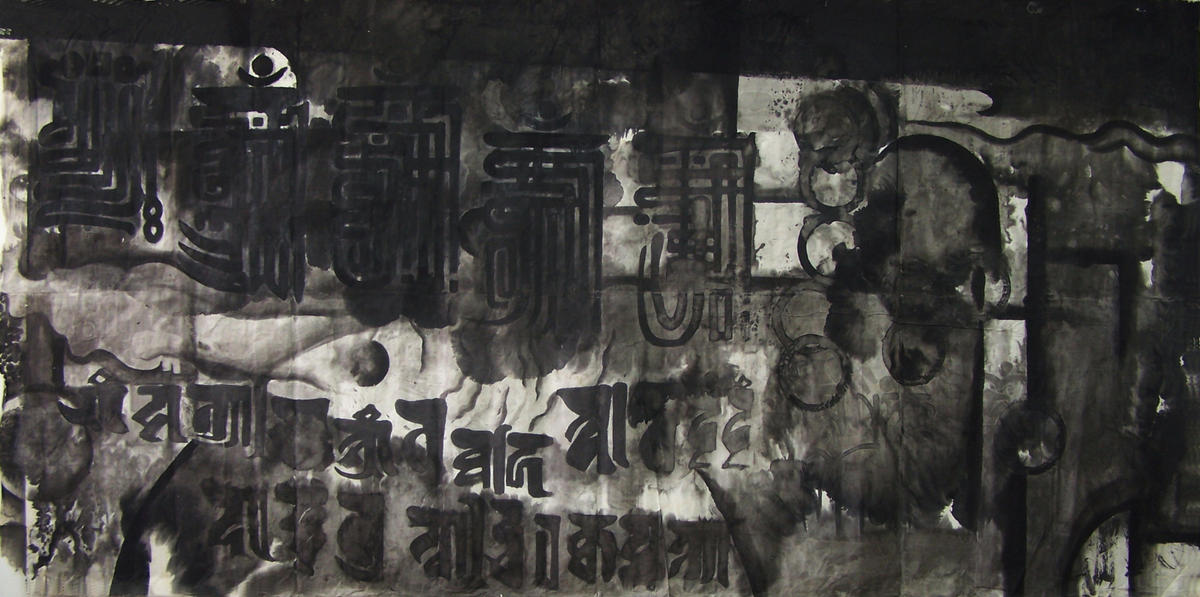
胡志颖 大昭寺印象,1989,高丽纸,水墨,400x200cm HU ZHIYING The Impression About Zuglakang Monastery, I1989, Ink on Korean paper, 400x200 cm
但水墨因其媒材性質而注定非常人所能駕馭。水至明,墨至暗,水墨無形而各居陰陽之極,調合二者必可造出萬千之勢象。然水墨無常,乃天地間至靈之物,運此二者若駕風馭雨,非天分過人者不能為之。胡志穎運此至靈之物於一人之管,一發而揮就《天風海雨》,以至柔之物為至剛之象,實時代之幸,乃'85新潮時期誕生的經典現代藝術之作。

胡志穎 天風海雨 (局部),1989,宣紙,水墨,960x182cm HU ZHIYING Nature's Mystery, 1989, Ink on Rice paper, 960x182 cm
但遺憾的是現有的所有史料在涉及所謂現代水墨的章節裡,從來沒有胡志穎的《天風海雨》。這雖然與其本人不事張揚的性格有關,但對於藝術史的書寫者來說,顯然有失職之嫌。

胡志穎 透視,1989,宣紙,水墨,960x182cm HU ZHIYING Perspective, 1989, Ink on Rice paper, 960x182 cm
因為這段藝術史必然會因為胡志穎《天風海雨》的缺失而喪失應有的高度。對於《天風海雨》,有評論家認為創作者應該借現代水墨當時的興起之勢而多做幾幅;其實未必,一張畫足以撼動一個時代,得此足矣!

胡志穎 透視 (局部),1989,宣紙,水墨,960x182cm HU ZHIYING Perspective, 1989, Ink on Rice paper, 960x182 cm
胡志穎是當代藝術家中卓然不群的一個,他和他的作品只屬於藝術,但不屬於任何一個藝術群體。
(原載《胡志穎作品集》,海風出版社,2011)
Resuming the Proper Height of History
——A Brief Comment on Hu Zhiying’s Nature’s Mystery
By Zhang Wenhai
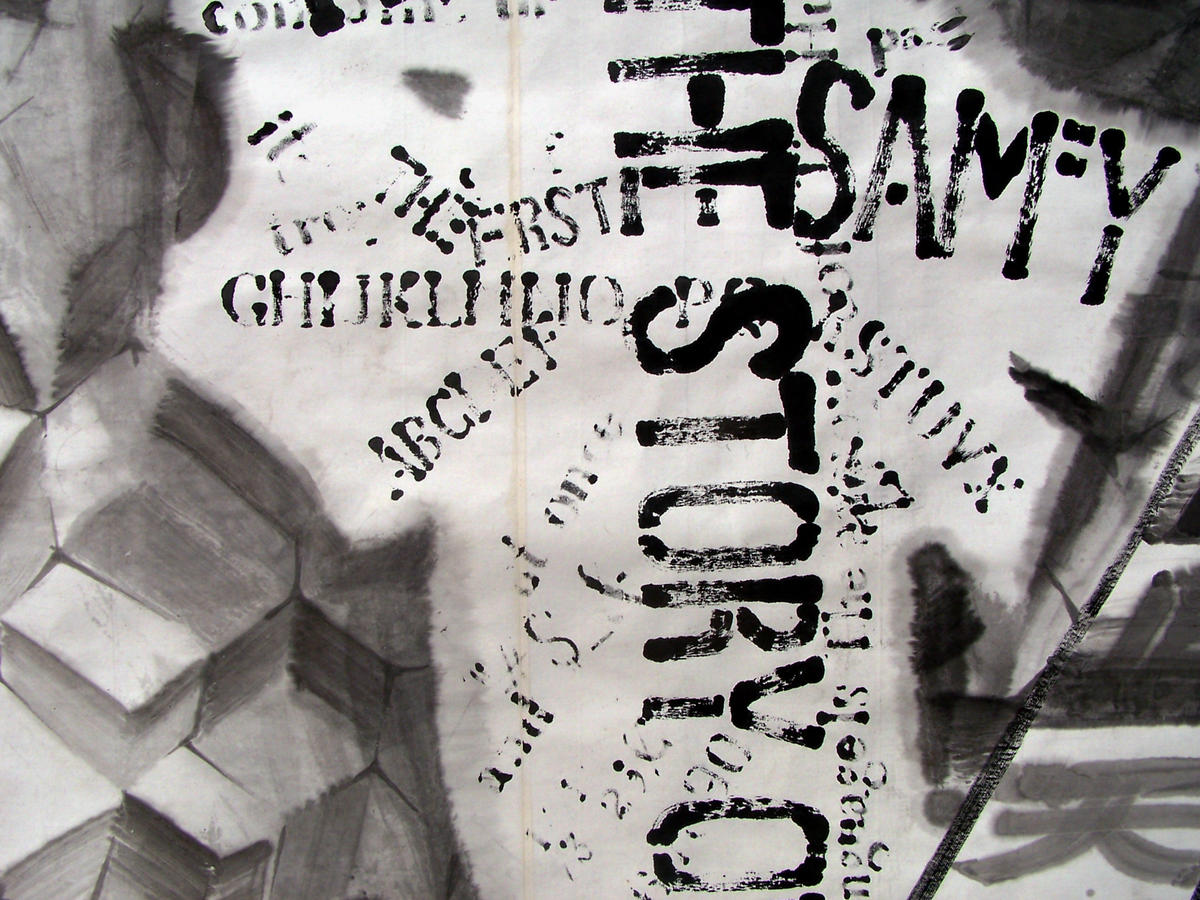
胡志穎 透視 (局部),1989,宣紙,水墨,960x182cm HU ZHIYING Perspective, 1989, Ink on Rice paper, 960x182 cm
To the art circles of China, the ’85 New Trend means the artists have broken away from the narrow space between art and politics. A sudden radical change has also taken place in the art of ink and wash after its development of more than a thousand years. Now techniques of ink and wash and compositional forms in the traditional sense are incompetent to convey modern artistic ideas which have broken away from a narrow space. The art of ink and wash is no longer something in which one’s feelings are expressed by means of depicting objects such as plum blossoms, orchids, bamboos and chrysanthemums, but instead, the artist’s personal modern artistic ideas are elucidated directly with ink and wash as a carrier. Ideas, when embodied in the painting, will necessarily lead to a breakthrough in techniques and schemata. In terms of the breakthrough of ideas, techniques and schemata, Hu Zhiying’s Nature’s Mystery suffices to be something to be used as reference by the artists of the ’85 period and even of present day. The richness of the language of ink and wash and schemata not only demonstrates the advanced modern artistic concepts of the artist but also provides visual stimulus and results in spiritual conquest.
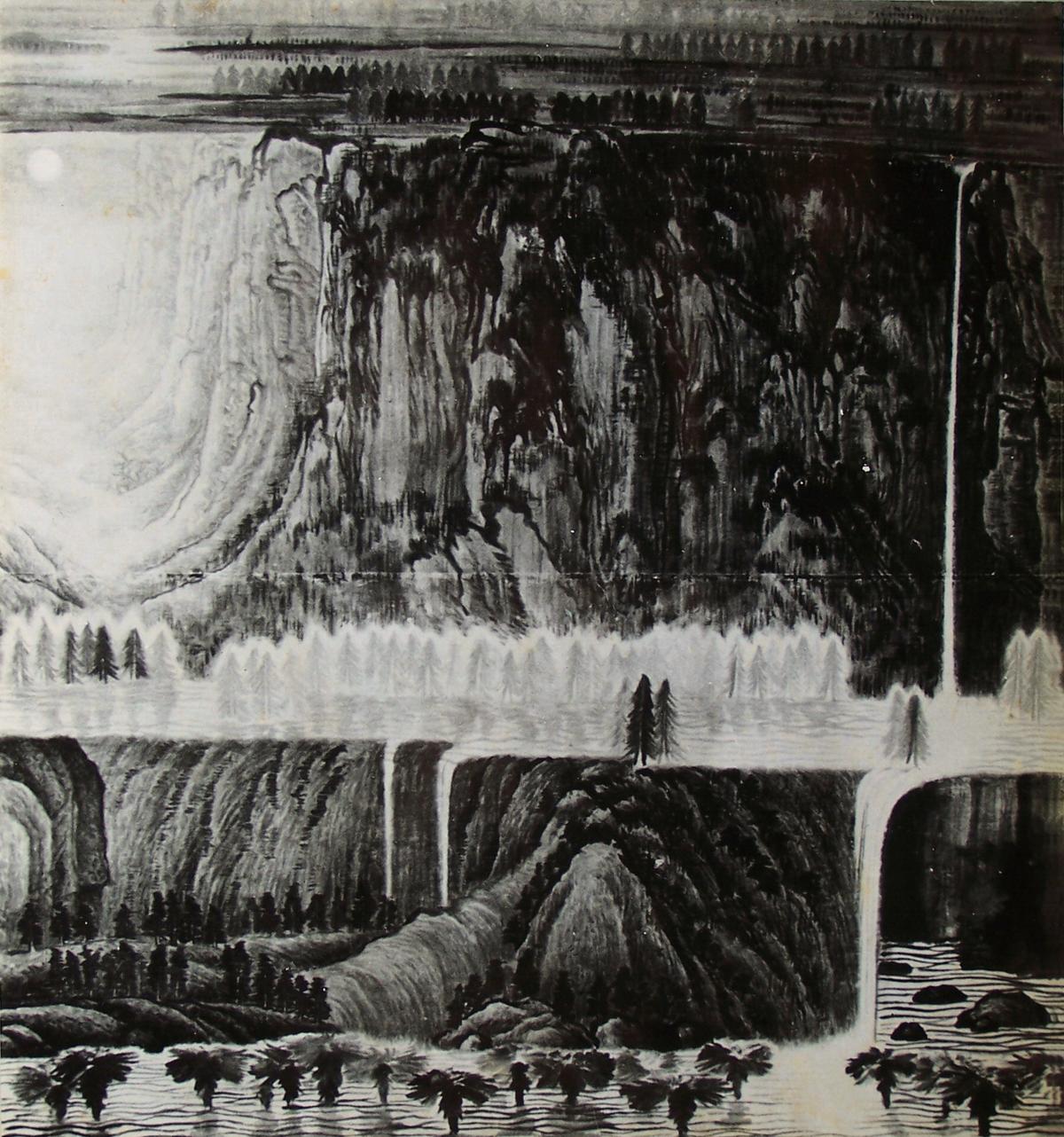
胡志穎 山水之一 ,1989,宣紙水墨,194x198cm HU ZHIYING Mountains and Waters I, 1989, Ink and Rice paper, 194x198 cm
The traditional concept of ink and wash stresses “conveying the spirit of the objects”. Zhang Yanyuan of the Tan Dynasty had the saying that “ideas and spirit are indispensable in the art of both painting and calligraphy” and began to regard the “ideas and spirit” of the artist as the purport of artistic creation. But it should be seen that in the Chinese art of ink and wash, up to the modern times in the usual sense, the “objects” used to convey spirit were never cast off in the painting. In the period of ’85 New Wave, with the aid of the abstract concepts of Western modern art, Chinese art of ink and wash shook off the yoke of “objects” at one go and the “mental images” of the artist were conveyed directly in the painting. Since then, innumerable individuals and groups have been engaged in the creation of modern ink and wash in an attempt to infuse new life into “ink and wash”, the medium with a history of over a hundred years, with the aid of the modern artistic ideas of the West. However, making a general survey of the situation, we find that the works that can be described as being of superior quality and worthy of the times are as sparse as the morning stars, and Hu Zhiying’s Nature’s Mystery is a commendable one of these morning stars. Nature’s Mystery, with a length of nearly 10 meters and a width of nearly 2 meters, was produced in 1989. Exactly at the age of thirty at that time, the artist was audacious, spirited, and forward-looking. This is reflected especially in the harmonious, lively and lucid
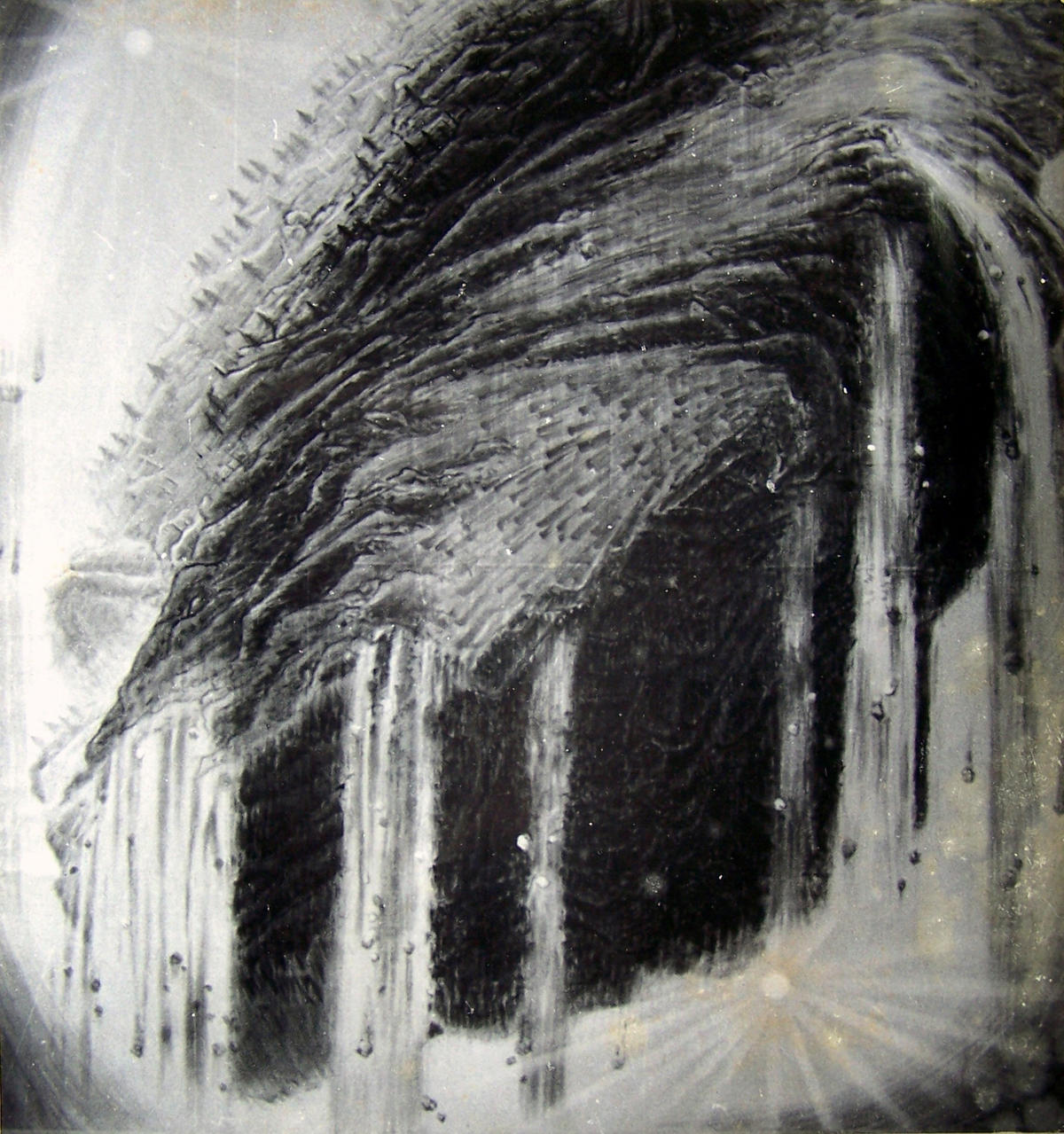
胡志穎 山水之三,1989,宣紙水墨,194x198cm HU ZHIYING Mountains and Waters III, 1989, Ink and Rice paper, 194x198 cm
language of ink and wash, gorgeous images, and the tremendous momentum of the painting. This monumental work, with a length of nearly 10 meters, is both mysterious and extensive as a whole and flexible and lively in detail. It fully manifests the surging passion of the artist, and the viewers are led to an inextricable, gloomy and fantastic world.
However, reviewing the course of development of Chinese modern ink and wash, we see with regret that after the connection between the art of ink and wash and Chinese traditional culture in concepts and schemata was shaken off, what has been brought about is the feebleness of the language of painting. The art of ink and wash has been reduced to the level of lyric pieces conveying trivial sentiments or has degenerated into something unintelligible, crude and awkward. As far as painting is concerned, the exposition of artistic concepts should by no means imply the enfeebling of expressiveness of the language of painting, for the art of painting should be, above all, a kind of visual art. Visual imagination should be contained in good visual art. This kind of works, through techniques and schemata, will not only demonstrate the imagination of the artist, but also provide the viewers with room for rich imagination. To achieve this goal, the artist is required to explore and enrich his language of painting in the process of artistic creation and not satisfied with the superficial artistic effect achieved in one step. In present Chinese art of painting, the artistic language is feeble. Hu Zhiying lays bare the reason with one remark: “The meagerness of the form language of a work of art will necessarily result in little value of the idea it reveals.”
However, the character of the mediums used in the art of ink and wash prevents ordinary people from mastering this art. Water is extremely clear and ink extremely dark. They are shapeless and are extremes of clear and dark things. When blended, they will necessarily produce countless effects. But water and ink are capricious and extremely flexible. To manipulate them is as difficult as to command the wind and rain and only people with extraordinary talent can do it. It is a good fortune of the times that Hu Zhiying, using these extremely flexible things, produced Nature’s Mystery, a classical work of modern art of the ’85 period. In this painting, he created most powerful images using most soft materials.
But unfortunately, Hu Zhiying’s Nature’s Mystery is never mentioned in any chapter about so-called modern ink and wash in all historical data. Although this has something to do with the artist’s unassuming personality, the writers of art history are evidently suspected of dereliction of duty. For the art history about this period will necessarily lose its proper height owing to the absence of accounts about Hu Zhiying’s Nature’s Mystery. Some critics thinks that Hu Zhiying should have taken advantage of the rising of modern ink and wash at that time and produced more works like Nature’s Mystery. In fact that is not necessary, for a single painting suffices to shake an era. This one is enough!
Hu Zhiying is an outstanding contemporary artist. He and his works belong to art only, but not to any art group.
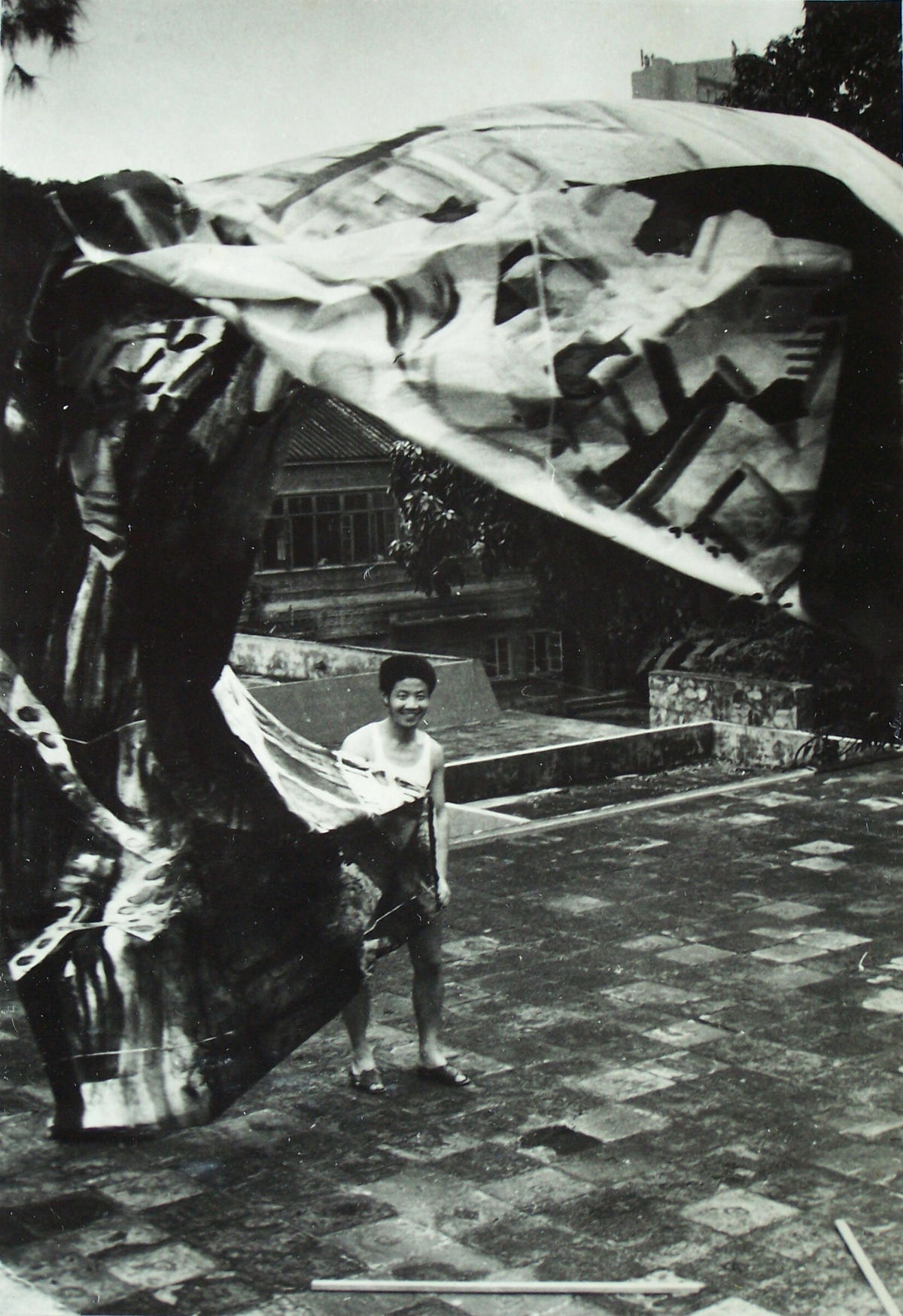
胡志穎1989年在廣州美院讀研究生時和他的作品《天風海雨》
Hu Zhiying and his work Nature’s Mystery in 1989 when he was a postgraduate student at Guangzhou Academy of Fine Arts
(A Collection of Works by Hu Zhiying, Haifeng Publish House, 2011)